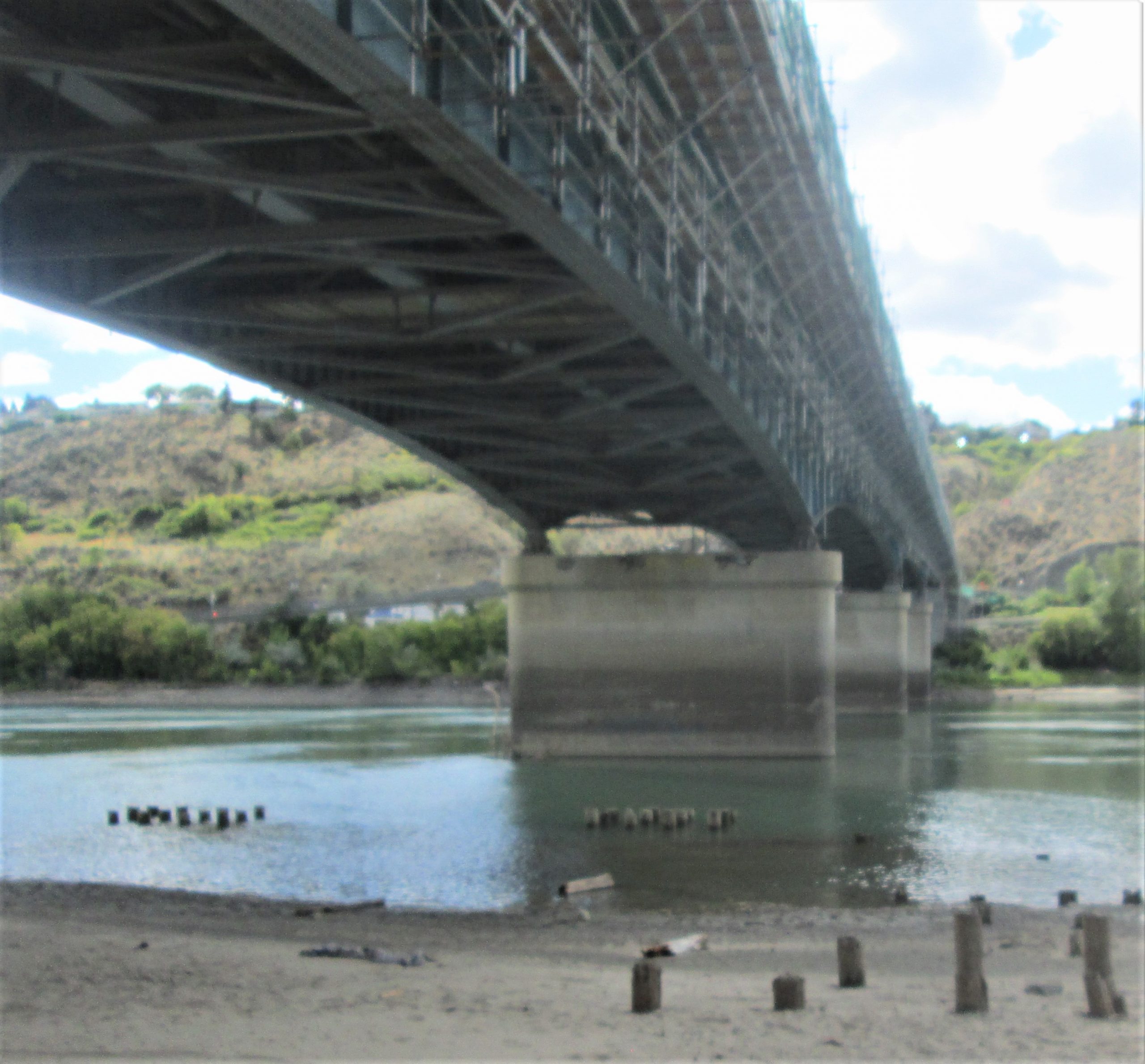The North Shore Bridges of Kamloops – Part 2
This article written and researched by M. Colleen Stainton. Images reproduced with permission of the Kamloops Museum and Archives.Hover over image for photo credits, or see the list at the end of the article for the image notations in order of appearance.
Overlanders Bridge
When halfway completed, the Kamloops Sentinel newspaper ran a contest to name the Bridge resulting in 500 entries 11 of which suggested “Overlanders,” the pioneers who canoed from Manitoba to Kamloops in1862. Joan Lyons won the $50 prize as her entry was the first to arrive at the newspaper office.
The two obelisks at each end of the bridge were designed by Jack Akroyd of Vancouver who was inspired by the local Indigenous lands. Foundations of fish weirs remain under the bridge.
Due to the blue colour of its steel understructure, this bridge is sometimes nicknamed, “The Blue Bridge.”
In 2005, without consultation, the City Council renamed the bridge “The Phil Gaglardi Bridge” to recognize the MLA and Highways Minister involved in the building who had objected to this suggestion during the contest. Public outcry quickly reversed this decision.



